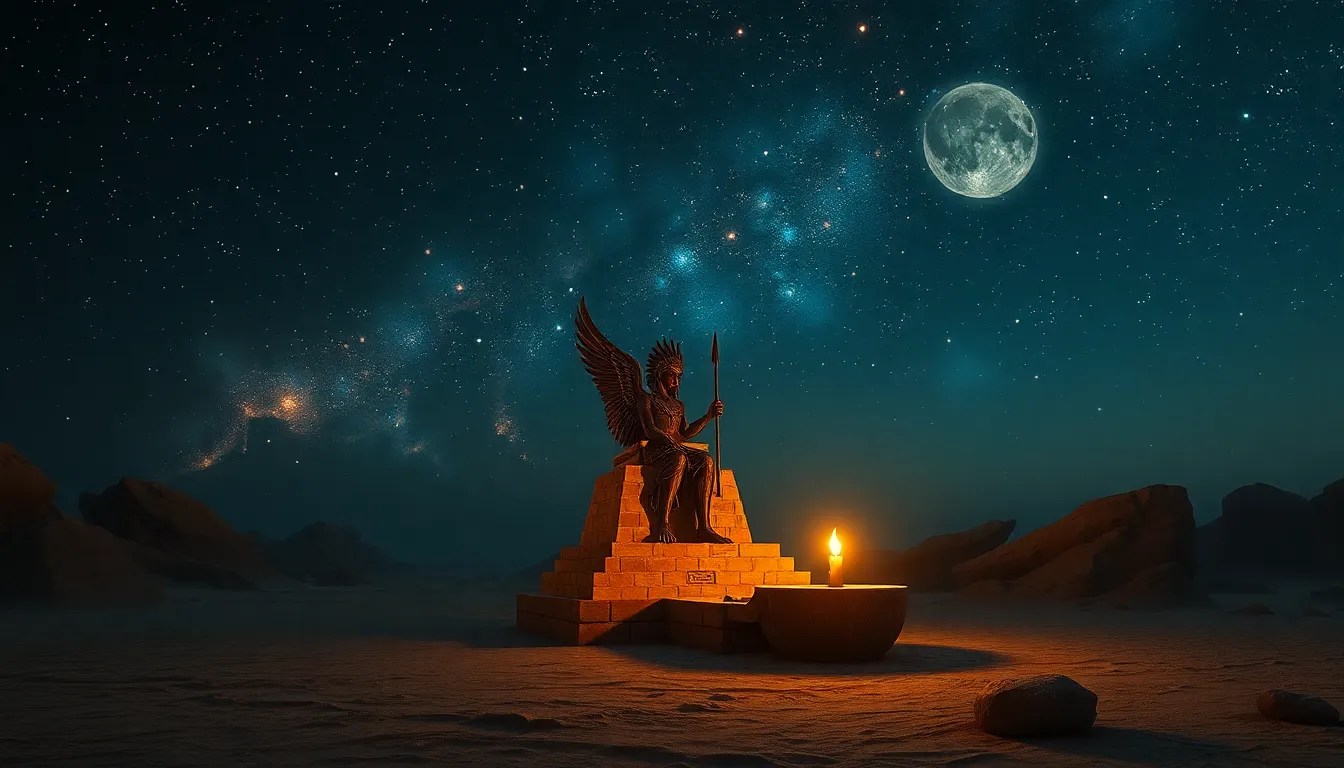The Significance of Dreams and Omens in Atrahasis
I. Introduction
The Atrahasis epic, one of the foundational texts of ancient Mesopotamian literature, presents a rich tapestry of mythological narratives that delve into humanity’s relationship with the divine. Composed in the 18th century BCE, this epic not only recounts the creation of humanity and the subsequent flood but also illustrates the profound significance of dreams and omens within its storyline.
In Mesopotamian culture, dreams and omens were considered vital forms of communication from the gods, guiding individuals in their personal and communal lives. This article aims to explore the complex role of dreams and omens in the Atrahasis narrative, illuminating how these elements shape the story and reflect broader cultural beliefs.
II. Background on Atrahasis
The Atrahasis epic narrates the story of Atrahasis, a wise man chosen by the gods to survive a great flood that they send to cleanse the earth of humanity’s noise and sins. The epic is structured around key themes such as creation, destruction, and the resilience of humanity.
Key characters in the narrative include:
- Atrahasis: The protagonist, a human favored by the gods.
- Enki: The god of wisdom who aids Atrahasis.
- Enlil: The god who decides to send the flood due to humanity’s disturbances.
The setting of ancient Mesopotamia, with its rich tapestry of beliefs and practices, serves as a backdrop for the epic. Mesopotamians viewed the world as a place influenced by divine forces, with dreams and omens acting as windows into the will of the gods.
III. The Role of Dreams in Atrahasis
In Babylonian mythology, dreams were seen as significant messages from the divine, often carrying warnings or guidance. The interpretation of dreams was a revered practice, as they were believed to reveal truths about the future or the intentions of the gods.
Throughout the Atrahasis epic, several pivotal dreams occur:
- Atrahasis receives a warning dream from Enki, foretelling the impending flood.
- Enlil dreams of the noise created by humanity, leading to his decision to destroy them.
These dreams are not merely narrative devices; they serve critical functions in the plot. Characters within the epic interpret these dreams as divine messages, prompting essential actions that ultimately lead to the survival of Atrahasis and the continuation of humanity.
IV. Omens as Divine Communication
Omens in Mesopotamian belief systems were signs or phenomena believed to be manifestations of the gods’ will. These could be natural occurrences or specific events that were interpreted by priests and diviners to foretell the future.
In the Atrahasis narrative, omens play a crucial role:
- Before the flood, various omens are observed that signal the displeasure of the gods.
- Atrahasis interprets these omens with the help of Enki, understanding that they foretell dire consequences for humanity.
The relationship between these omens and the gods’ will is central to the epic, as they guide characters in making decisions that align with divine intentions.
V. The Interplay Between Dreams and Omens
In the Atrahasis narrative, dreams and omens complement each other, creating a cohesive framework for divine communication. Both elements serve as methods for the gods to convey their will to humanity, and their interpretations are pivotal in shaping the plot.
The impact of dreams and omens on character decisions is profound:
- Atrahasis’s choice to build an ark is motivated by the dream and the interpretation of omens.
- Enlil’s decision to flood the earth is influenced by the omens he perceives regarding humanity’s actions.
Moreover, the cultural significance of interpreting dreams and omens together reflects a deep-seated belief in the interconnectedness of the human experience and the divine realm.
VI. Theological Perspectives on Dreams and Omens
Insights from Babylonian religion reveal that dreams and omens were considered sacred forms of divine messages. They were believed to be tools through which the gods communicated important information about the present and the future.
The role of priests and diviners was crucial in interpreting these messages. They would analyze the content of dreams and omens, providing guidance to individuals and the community:
- Priests would conduct rituals to decipher omens.
- Diviners would interpret dreams based on established techniques and patterns.
The moral and ethical implications of these interpretations are significant in Atrahasis, as the characters grapple with their responsibilities towards the will of the gods and the fate of humanity.
VII. Comparative Analysis with Other Mesopotamian Texts
When comparing the portrayal of dreams and omens in Atrahasis with other Mesopotamian myths, several similarities and differences emerge. Other texts, such as the Epic of Gilgamesh, also feature dreams as significant narrative elements, but the context and implications can vary widely.
The influence of Atrahasis on later Babylonian literature is notable, as themes of divine communication through dreams and omens persisted in subsequent texts. These narratives highlight a broader understanding of fate, free will, and the human condition in Mesopotamian mythology.
VIII. Conclusion
In summary, the significance of dreams and omens in the Atrahasis epic cannot be overstated. They serve as vital conduits for divine communication, guiding characters and shaping the narrative’s trajectory. The exploration of these themes offers profound insights into Mesopotamian culture and its understanding of human existence.
Reflecting on the enduring legacy of dreams and omens, it is clear that these motifs continue to resonate in modern interpretations of mythology and human experience. Ultimately, the importance of dreams and omens transcends the ancient world, inviting us to consider their role in our lives today.



